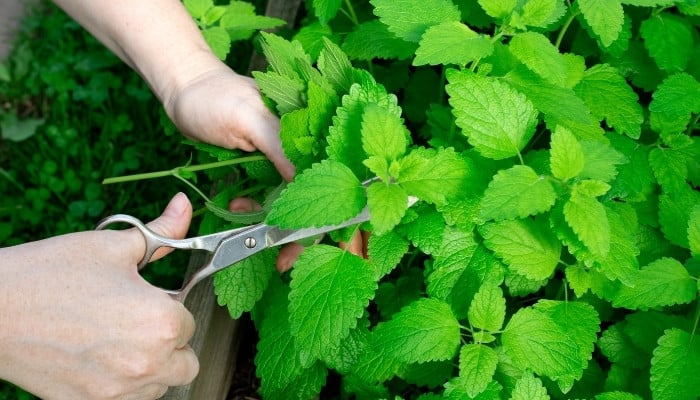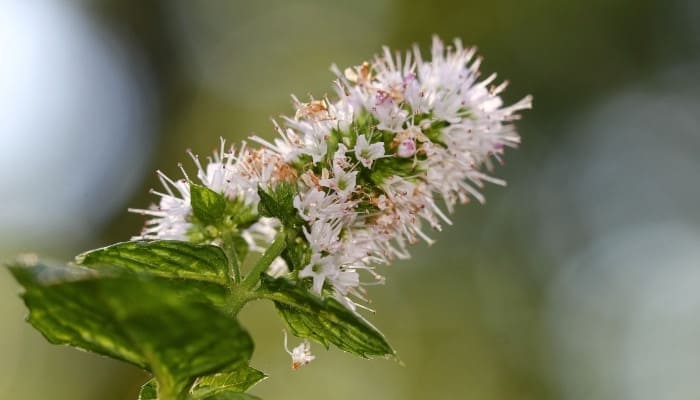Mint is a type of evergreen shrub that can be found in several different varieties.
Mint not only gives the most refreshing taste and aroma to the drinks, but it also produces blooms in purple and pink flowers to adorn your garden.
Mint plants flower every summer, and if you are concerned about your mint blooming, we can assure you that it is pretty normal.
Mint is a perennial plant that flowers to produce seeds and grow new mint plants the following year.
Why is my mint flowering? The natural life cycle of the mint plant includes flowering toward the end of summer. Flowering is an indication that your mint plant is healthy and ready to produce seeds. Because mint is perennial, flowering does not signal death, but flowering mint may have diminished minty flavor.
If you’re growing mint in your garden and want some expert advice on how to care for it, keep reading.
We’ve addressed all of your concerns about the flowering mint plants and have some useful tips for you as well.
Flowers on Mint Plants: Why It Happens & What It Means
Flowering is part of the natural life cycle of plants. When plants are ready to reproduce, they bloom.
Flowers serve as reproductive organs of plants.
They produce pollen, and when the pollen lands onto the reproductive part of another flower, fertilization occurs and seeds are produced, which is, of course, a source of new plants.
Why Mint Plants Flower
Like other flowering plants, mint plants flower when they are ready to reproduce.
It usually happens when the mint plant is exposed to higher temperatures or other stimuli that encourage bolting.
However, mint is a perennial plant, so it does not die immediately after flowering.
Mint Plant Life Cycle
Mint is a hardy perennial, which means it lives for two or more years under suitable conditions. Mint plants can be propagated with either seeds or by rooting a cutting.
When left unchecked, mint will send out runners that will readily root wherever they touch soil. These can be cut from the mother plant and planted elsewhere.
For seed propagation, the seed is sown in early spring, germinates in a few weeks, and becomes a full bush by mid-summer. It may bloom in the summers after its second year.
The stem above the ground dies in the winter, but roots remain alive and grow new shoots in the early spring.
Mint plants bolt and produce flowers towards the end of life to grow new plants. Mint may survive up to 10 years if properly cared for.
Discover key growing tips to ensure a long life for your mint in our article here.
When Mint Plants Are Most Likely To Flower
Mint plants usually flower when the temperature is high. The flowering begins in midsummer and lasts until autumn.
Signs That Mint Plants Are Going To Flower
As summer wanes into autumn, you will notice that the mint plant’s leaf production starts to slow down. This is perfectly normal.
You will also see tiny white, purplish mint flowers situated above its leafy foliage.
The stem will also seem woodier and less bushy. This is because all the plant’s nutrient resources are being put into producing flowers.
Do Mint Plants Die After Flowering?
As mentioned above, the mint is a perennial plant. This means it will return to its natural bushy state each growing season.
Therefore, the mint plant will not die after flowering, but it will grow new plants from seeds alongside the parent plant resulting in a larger mint plant.
Are Mint Leaves Still Good After the Plant Flowers?
Yes, mint leaves are still good after flowering. You can use them for your food and beverages like before.
However, you may notice a slightly less intense flavor simply remedied by adding more mint leaves to your recipes.
Should Mint Flowers Be Removed?
It is not necessary to remove mint flowers. It will not affect the quality of the leaves.
However, it is recommended to cut the flowers before they develop seeds or else your mint will self-seed and expand into many new plants.
Are Mint Flowers Edible?
Mint flowers are edible. Along with the minty taste, these purplish-white flowers may have lemon, apple, or grapefruit flavor, depending upon the type of mint.
They can be used in salads, drinks, and other dishes where mint leaves are usually used.
Mint Flower Uses
- Use mint flowers to give an exotic, fresh flavor to your lamb, steak, and seafood dishes.
- Add the mint flowers to your glass of iced tea for a touch of color and flavor.
- Use them as a garnish on cocktails, salads, drinks, or desserts that need some colorful flair.
- Place them in a vase as part of a centerpiece or to decorate the table at an outdoor luncheon.
- Dry the mint flowers and use them in winter to have a minty tea. Your tea will be mild and perfectly minty without being astringent.
How To Stop Mint From Flowering

Flowering on the mint plant is harmless, so you don’t have to do anything, but if you want to prevent the plant from flowering, you can do so by following a few practices:
- Prune your plants extensively at the start of summer. This will delay the blooming process.
- Regularly harvest the leaves from your plant. This will keep the plant producing fresh leaves.
- Use mulch at the base and keep the plant in a shady place to reduce exposure to high temperatures, which induce flowering in the mint plant.
- Use high-nitrogen growth fertilizer (like this organic one), which improves the green foliage of the mint plant.
- Snip off any flowers that appear. This will allow the plant to focus its energy on foliage production and maintain a healthy root system instead of putting resources into reproduction.
The Importance of Pruning Mint Plants
Mint pruning is important for aesthetic reasons (maintaining a neat appearance) and functional purposes (prevent bolting and greener foliage).
Mint plants grow more prolifically the more you prune them. During the growing season, give your mint plants a light monthly trim to keep them bushy and producing plenty of new leaves.
It is recommended to give a hard prune right after flowering season ends.
Pruning regularly also protects mint plants from pests and diseases and improves root development and plant health.
Related Questions:
Why Are My Mint Leaves So Small?
A variety of factors can cause small leaves on mint plants. Signs of stress are quickly seen in the development and size of the mint plant’s leaves.
Causes of small leaves include:
- Lack of nutrition. Feed your mint during the growing season using a balanced fertilizer.
- Container is too small. Roots become rootbound in small pots, resulting in slow and reduced growth.
- Insufficient light. Mint plants enjoy sunny areas, increase their light exposure by moving the container to a bright spot.
- Flowering. Small leaves may be a sign that your mint plant will flower soon. At the end of the growing season, the plant will put all its resources into new flowers and restrict leaf growth.
How Many Types of Mint Plants Are There?
More than 7,500 different species of mint plants exist. They belong to the Lamiaceae family, and some even grow as trees and shrubs!
Certain mint plants are specially cultivated, while others are found in the wild.
Some varieties include peppermint, spearmint, pennyroyal, apple mint, Moroccan mint, and chocolate mint, all of which are edible and a great addition to the garden.
Grow a variety of mints around your compost area to keep it smelling fresh and fragrant!
Conclusion
Mint is a perennial plant that lives for many years when you take care of it.
Like other flowering plants, mint blooms in white, purple, and pink flowers in midsummer to produce new plants.
It continues its life cycle by going dormant in winter and then sprouting new shoots every spring.
Though flowering does not impact the plant, it is recommended to delay or avoid flowering if you want to keep your plant bushy and the flavor more potent.
Regular pruning and maintaining optimum temperatures are the best ways to keep your mint plant from flowering.

